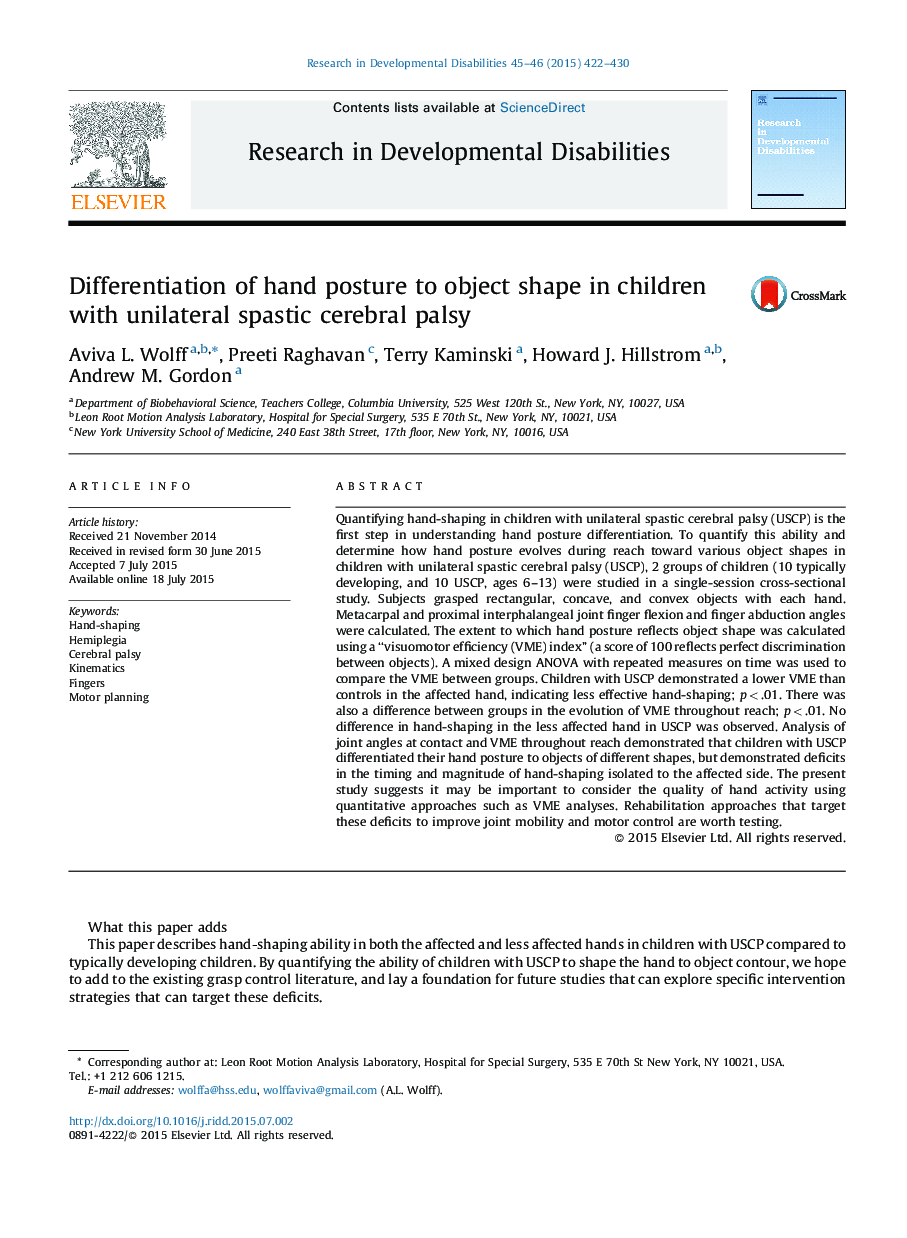| کد مقاله | کد نشریه | سال انتشار | مقاله انگلیسی | نسخه تمام متن |
|---|---|---|---|---|
| 371192 | 621900 | 2015 | 9 صفحه PDF | دانلود رایگان |
• Hand-shaping during reach to grasp was studied in children with USCP.
• Children with USCP exhibit limitations in hand shaping ability.
• Deficits in the timing and magnitude of shaping is isolated to the affected side.
• Rehabilitation approaches that target whose deficits are worth testing.
Quantifying hand-shaping in children with unilateral spastic cerebral palsy (USCP) is the first step in understanding hand posture differentiation. To quantify this ability and determine how hand posture evolves during reach toward various object shapes in children with unilateral spastic cerebral palsy (USCP), 2 groups of children (10 typically developing, and 10 USCP, ages 6–13) were studied in a single-session cross-sectional study. Subjects grasped rectangular, concave, and convex objects with each hand. Metacarpal and proximal interphalangeal joint finger flexion and finger abduction angles were calculated. The extent to which hand posture reflects object shape was calculated using a “visuomotor efficiency (VME) index” (a score of 100 reflects perfect discrimination between objects). A mixed design ANOVA with repeated measures on time was used to compare the VME between groups. Children with USCP demonstrated a lower VME than controls in the affected hand, indicating less effective hand-shaping; p < .01. There was also a difference between groups in the evolution of VME throughout reach; p < .01. No difference in hand-shaping in the less affected hand in USCP was observed. Analysis of joint angles at contact and VME throughout reach demonstrated that children with USCP differentiated their hand posture to objects of different shapes, but demonstrated deficits in the timing and magnitude of hand-shaping isolated to the affected side. The present study suggests it may be important to consider the quality of hand activity using quantitative approaches such as VME analyses. Rehabilitation approaches that target these deficits to improve joint mobility and motor control are worth testing.
Journal: Research in Developmental Disabilities - Volumes 45–46, October–November 2015, Pages 422–430
